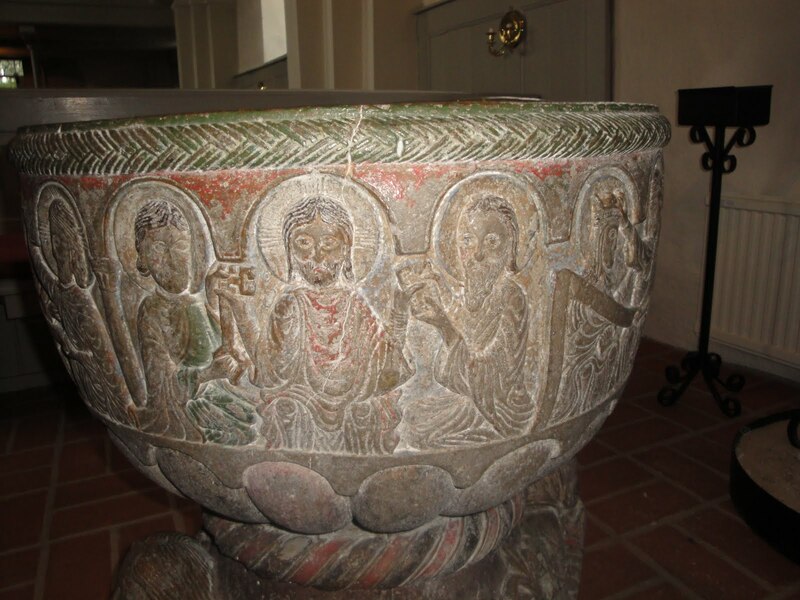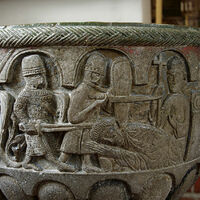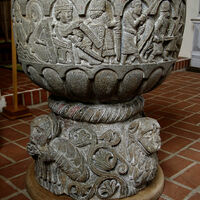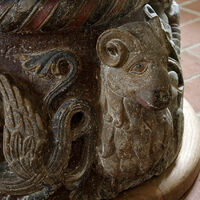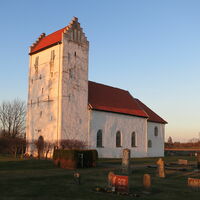Lyngsjö font
Type:
Baptismal fonts,
Churches
Date:
ca. 1190
Location or Findspot (Modern-Day Country):
Sweden
Medium:
Stone
Dimensions:
H 77 cm
Description:
A parish church was built at the village of Lyngsjö, Sweden, in the 1140s by a stonemason and carver named Tove. It preserves its medieval frescoes, gilt-copper altar frontal, and a late twelfth-century sandstone font that is still in use. Above a base with animal and human figures in high relief, the basin depicts the murder of Archbishop Thomas Becket in Canterbury Cathedral in 1170, two decades before the font was carved. Becket's antagonist, King Henry II, is the only figure identified by name; a scroll reads "rex Henricus." The king dispatches his knights to Canterbury, where one slices off the top of the archbishop's head; this became the principal relic of Canterbury's newly built Corona Chapel. Behind Becket, a monk named Edward Grim has his wrist sliced, but he managed to survive. Behind him, a dove is shown descending into the chalice on the altar, a reference to the Holy Spirit and also to how Becket's brains were allegedly scooped up and brought to the altar. To the right, Becket has ascended to heaven and is blessed by Christ, who is also shown between saints Peter and Paul. This side of the font preserves considerable polychromy.
Becket, who defended the Church and stood up against royal tyranny, quickly became a very popular saint. He was canonized in 1171, and Canterbury became an important pilgrimage destination, producing a variety of relevant souvenirs. Becket's relics were dispersed widely, and the murder was depicted in diverse media all across Europe.
Becket, who defended the Church and stood up against royal tyranny, quickly became a very popular saint. He was canonized in 1171, and Canterbury became an important pilgrimage destination, producing a variety of relevant souvenirs. Becket's relics were dispersed widely, and the murder was depicted in diverse media all across Europe.
Relevant Textbook Chapter(s):
8
Image Credits:
Wikimedia Commons
